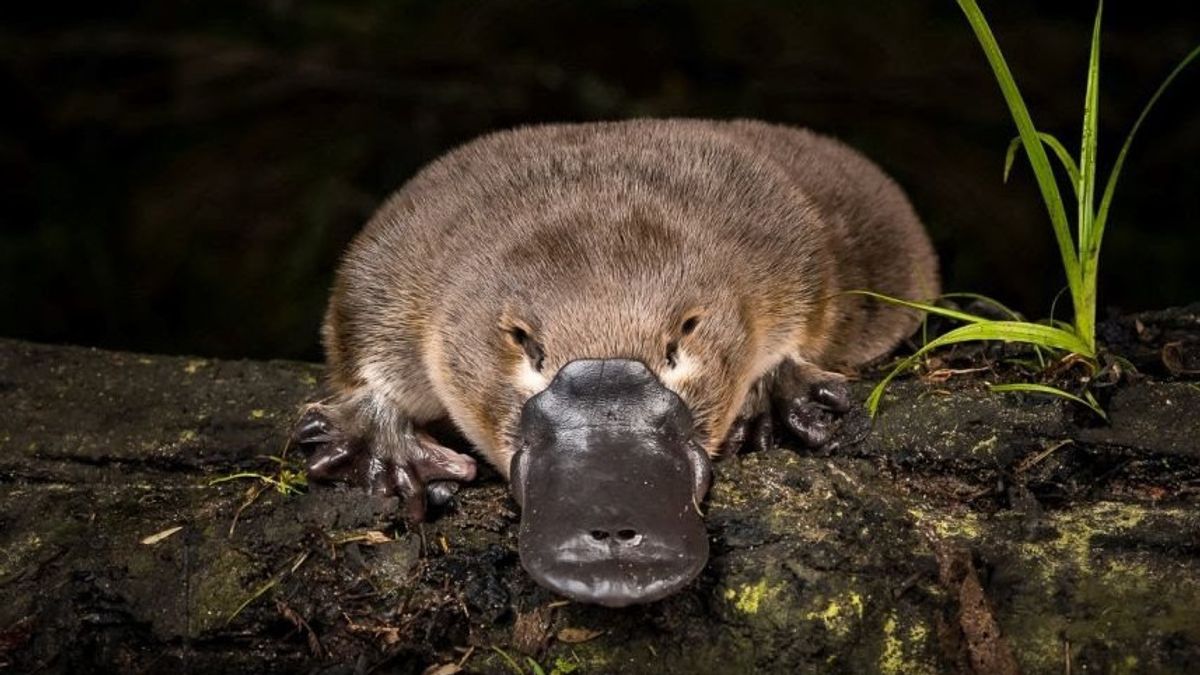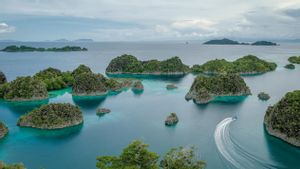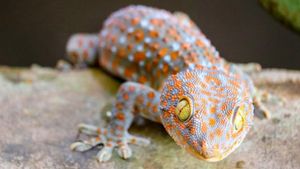JAKARTA - Who doesn't know Platypus or Platypus animals? This unique mammal, nicknamed the duckbill, from Australia, is now under threat. Its habitat is reported to have shrunk 22 percent over the past 30 years.
Several scientists from the University of New South Wales, along with Australia's three largest environmental organizations, namely the Australian Conservation Foundation, WWF Australia and the Australian Humane Society International, listed the platypus as an endangered animal.
Of course this is very unfortunate, because the Platypus is a unique animal. It is known, the Platypus is famous for its strange shape, it has a flat beak, dense waterproof hair, and strong forelimbs used for swimming and digging. Often referred to as a duck-like animal but it is a mammal.
Platypuses, as quoted from Britannica, Saturday, November 28, generally eat invertebrates that live under water, but also sometimes eat frogs, fish or insects on the surface of the water. These shy creatures forage from dusk until dawn, taking shelter during the day in burrows dug on the banks of rivers.
According to research, Platypuses were originally found in highlands such as Tasmania and the Australian Alps to lowland areas close to the sea. Although occasionally seen swimming in salt water, the platypus often forages in fresh water.
Platypuses occur in eastern Australia in river systems that flow east and west, but absent in far northern Queensland. A study has shown that the Platypus can maintain a constant body temperature even after long periods in water with temperatures as low as 4 degrees Celsius. Although unique and strange looks, the Platypus can survive for nearly 23 years in captivity.
Interesting Facts About the PlatypusApart from questioning the life of the Platypus, there are also interesting facts about this animal that you also need to know. The following is a review quoted from Treehugger.
1. Looks As Fake Animal
In 1799, the Platypus was once mistaken for a fake animal, and it is described in Naturalist's Miscellany by George Shaw. The platypus is described as having a duck-like beak and legs, and a beaver-shaped body, tail and fur. Initially, Shaw had doubts about its authenticity, but he still dubbed the creature as a flat-footed duck.
2. Is a venomous mammal
Many do not think that the Platypus is a venomous mammal, and it is rarely found. The male platypus secretes venom through ankle spurs. Its venom consists of defensin-like protein, and it is dangerous but does not kill humans, although it can kill smaller animals. The female platypus is different from the male, it has no venom.
3. Can See Under Water
Instead of using the eye, the Platypus basically can't see and smell anything. The folds of skin cover the eyes, and the nostrils become watertight. However, the platypus has the electroreceptors needed to detect living organisms for feeding after they burrow on the ocean floor.
4. Platypus milk can fight superbugs
In 2010, scientists discovered that Platypus milk contains antibacterial properties that can help fight antibiotic resistance. Since the platypus does not have a sterile way to produce milk, these mammals need additional protection against bacteria in the environment.
5. Has 10 Sex Chromosomes
This is one of the reasons why the Platypus is considered a unique animal, because mammals usually only have one pair of chromosomes that determine sex, but the Platypus has five pairs.
6. Do not Have Stomach and Teeth
[/ read_more]
Unlike other animals, the platypus does not have a sac of digestive enzymes or acids to digest its food. A study published in Genome Biology outlines several different genes with digestion and stomach being removed or deactivated in the platypus.
Then how can the platypus chew its food? Of course when Platypuses dive for food, they also pick up sand and gravel from the seabed. Then, it surfaced for air and began to chew by grinding gravel with its prey.
7. The giant platypus
Several years ago, a giant platypus tooth fossil was found in Queensland, Australia. From these findings, scientists finally learned that this duck-like beaked animal used to be twice as large as it is today.
It is currently known that the platypus is only about 40 cm in size, but around five to 10 million years ago, there was a platypus that was twice as large and even equipped with teeth capable of chewing on other animals.
Scientists were confused about why the current Platypus could lose its teeth. However, the process of tooth loss and size reduction, as well as the limited distribution of these animals, indicate that this animal is at risk of extinction.
8. Platypuses are at risk of extinction
As said, the Platypus should be listed as critically endangered on the International Union for Conservation of Nature (IUCN) Red List of Threatened Species.
This is due to the extreme and prolonged drought conditions in Australia. Recent forest fires have also affected these species.
Weirdest Animal Apart from the PlatypusThe platypus is not the only strange mammal or animal that has ever appeared on Earth, therefore, the following VOI lists some strange animals that were summarized from various sources.
1. Jabiru stork
The stare in the dark, staring eyes of the five-foot crane could be terrifying to everyone. How not, this animal originating from Central and South America has a 14 inch long beak. The Jabiru Stork usually feeds on small mammals, fish and amphibians.
2. Axolotl
This extraordinary amphibian originates from a small lake and canal near Mexico City. It numbered in the thousands and provided an important source of food for the Aztecs. Unfortunately, the wild Axolotl population is thought to have dwindled to just a few individuals due to habitat loss.
Axolotls can grow to 18 inches in length, and they are characterized by a unique set of external gills along with the ability to regrow lost limbs.
3. Pangolin
Pangolins or pangolins are the only mammals known to have scales. Their habitat is partly in the regions of Central and West Africa, India and Southeast Asia.

When threatened by predators, the Pangolin will roll up into a defensive ball, protected by a layer of keratin scales that are like armor. Unfortunately, these insectivores are one of the most illegally trafficked mammals in the world.
Their scales are thought to have medicinal properties in parts of Asia, and despite international trade bans, the number of wild pangolins has dropped dramatically due to poaching.
4. Echidna
Echidna or Ekidna inhabit several areas in mainland Australia. Echidna is one of only two mammals that lay eggs. Although it resembles a hedgehog, Echidna is actually a distant relative of the Platypus, believed to have evolved 20 to 50 million years ago from an aquatic ancestor. Echidna feeds on ants and termites, using its long snout to catch prey.
5. Alligator Gar (Crocodile Gar)
This crocodile, arguably a fish-like, is a relic of the dinosaurs, is about 100 million years old and grows to over eight feet in length.
While the snout is like a reptile has a row of sharp teeth. Despite their size and weaponry, the gar crocodile is a tame creature that can be found swimming peacefully in freshwater rivers and lakes from the Rio Grande to the Missouri River.
[/ read_more]
The English, Chinese, Japanese, Arabic, and French versions are automatically generated by the AI. So there may still be inaccuracies in translating, please always see Indonesian as our main language. (system supported by DigitalSiber.id)













